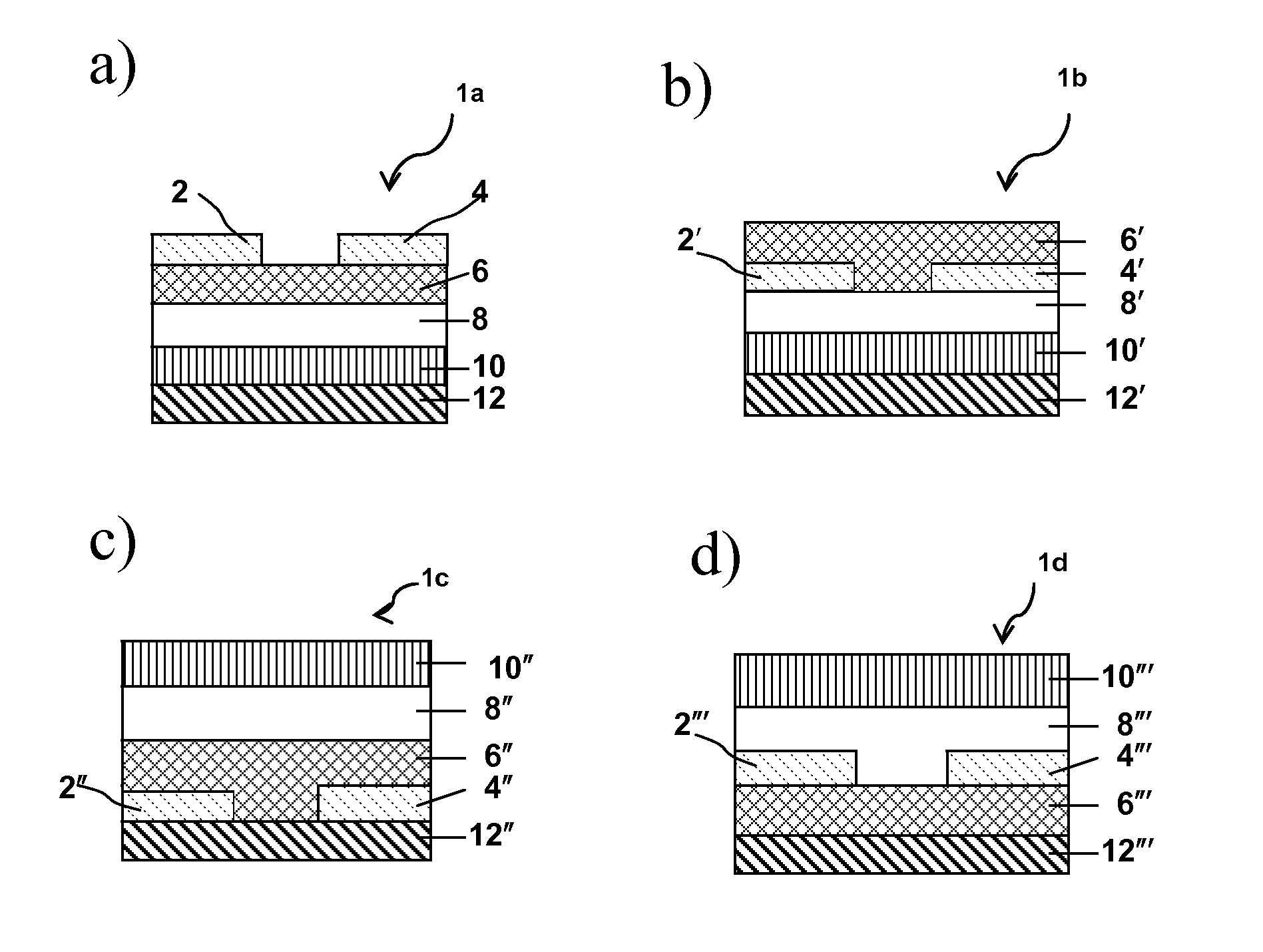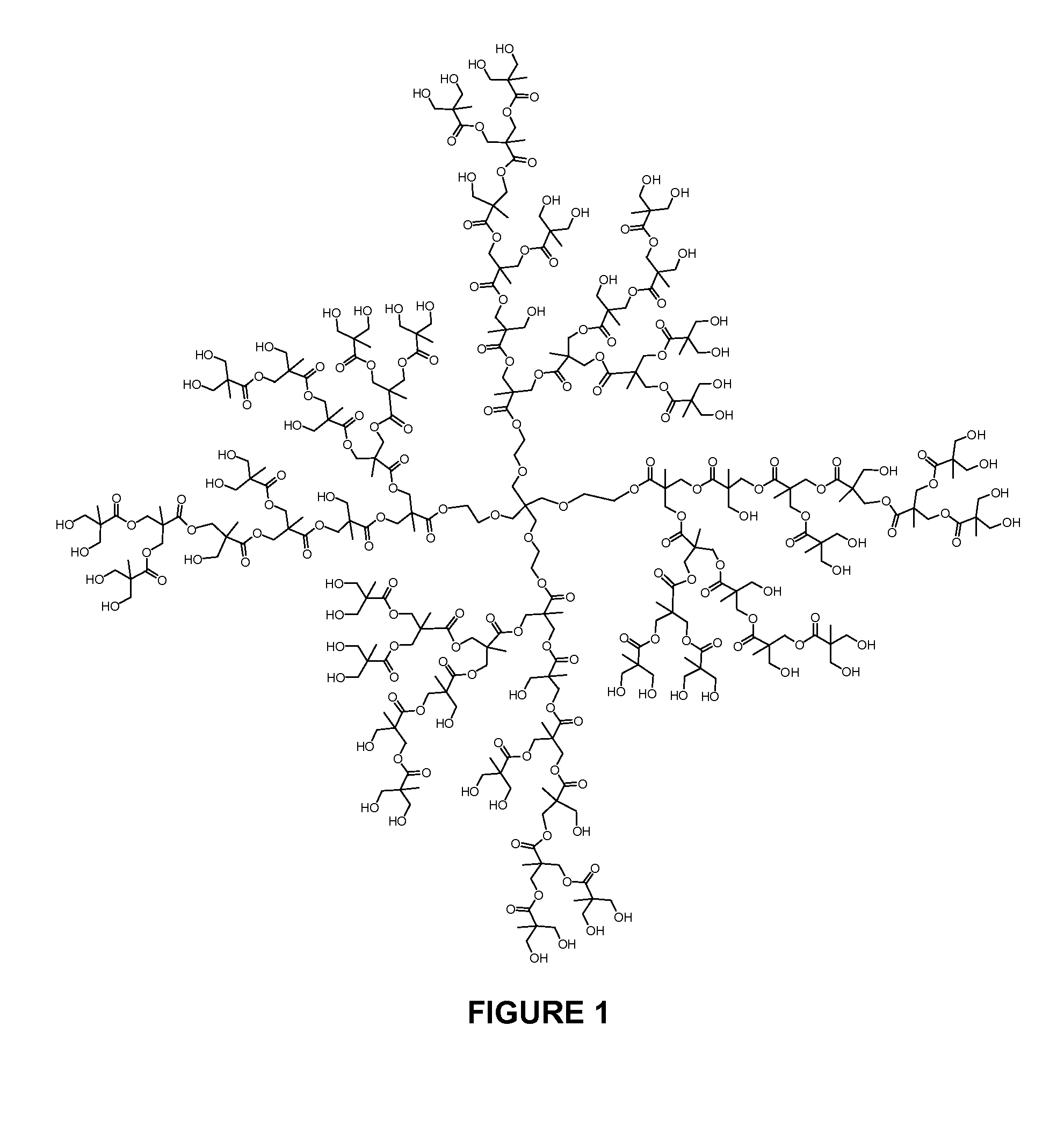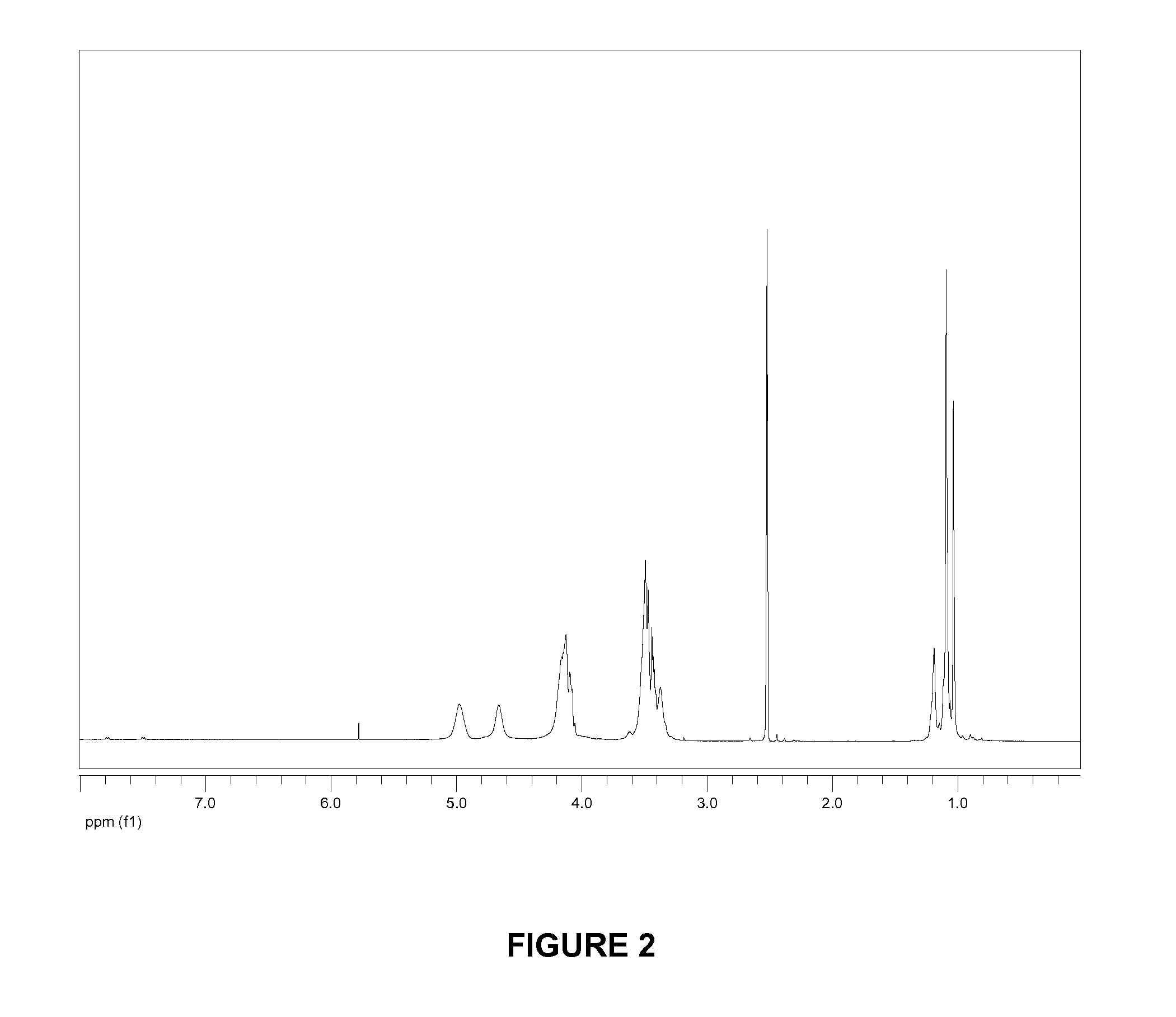Dielectric Materials and Methods of Preparation and Use Thereof
- Summary
- Abstract
- Description
- Claims
- Application Information
AI Technical Summary
Benefits of technology
Problems solved by technology
Method used
Image
Examples
example 1
Synthesis of D1
[0120]
[0121]To a solution of hyperbranched bis-MPA polyester-64-hydroxyl, generation 4 (“D-(OH)64”, average molecular weight 7323, from Sigma-Aldrich) (2.0 g, 0.27 mmol) and 10 mg of 4-dimethylaminopyridine in 8 mL of pyridine was added a solution of 8.0 g (40.3 mmol) of adamantoyl chloride in 10 mL of methylene chloride. The mixture was stirred at ambient temperature for 3 hours then treated with 1 mL of acetic anhydride. The mixture was stirred at ambient temperature for 1 hour then treated with 3 mL of water. The mixture was stirred for 5 minutes then treated with 100 mL of methanol. The supernatant was decanted and the remaining residue was precipitated twice more from methylene chloride (15 mL) / methanol (75 mL), each time decanting the supernatant. The remaining residue was concentrated under vacuum to give 4.5 g (93% yield) of a colorless foam. 1H NMR (CDCl3, 500 MHz): δ 4.35-4.11 (m), 3.72-3.41 (m), 2.10-1.20 (m). GPC (chloroform, polystyrene standard) MN=7.7 k...
example 2
Synthesis of D2
[0122]
[0123]To a solution of 6.0 g (0.82 mmol) of D-(OH)64 and 10 mg of 4-dimethylaminopyridine in 40 mL of pyridine was added 16 mL g (120 mmol) of cyclohexanecarbonyl chloride. The mixture was stirred at ambient temperature for 1 hour then treated with 3 mL of water. The mixture was cooled to room temperature and poured into 150 mL of methanol. The supernatant was decanted and the remaining residue was precipitated from methylene chloride (20 mL) / methanol (100 mL). The remaining residue was washed with methanol (3×10 mL) and concentrated under vacuum to give 9.2 g (78% yield) of a colorless foam. 1H NMR (CDCl3, 500 MHz): δ 4.35-4.11 (m), 3.72-3.41 (m), 2.30-1.00 (m). GPC (chloroform, polystyrene standard) MN=8.5 k, PDI=1.7.
example 3
Synthesis of D3
[0124]
[0125]A mixture of 4.7 g (33.1 mmol) of 2-methylcyclohexyl carboxylic acid (Aldrich, mixture of cis and trans), 10 mL of oxalyl chloride, and dry dichloromethane (70 mL) was stirred at room temperature under nitrogen for 30 minutes then refluxed for 3 hours. The mixture was concentrated in vacuo to give a colorless oil (5.2 g, 98%). 1H NMR (CDCl3, 500 MHz): δ 2.97 (m, 1H), 2.37 (m, 1H), 1.85 (m, 1H), 1.80-1.70 (m, 2H), 1.70-1.60 (m, 2H), 1.60-1.46 (m, 2H), 1.45-1.25 (m, 2H), 1.00 (d, 3H, J=7.0).
[0126]Under nitrogen, D-(OH)64 (0.59 g, 0.081 mmol) and DMAP (15.1 mg) were dissolved in dry pyridine (1.5 mL). A solution of 2-methylcyclohexyl carbonyl chloride (1.69 g, 10.5 mmol) in dry DCM (6 mL) was added slowly. The reaction mixture was allowed to stir at room temperature under nitrogen for 15 hours. Acetic anhydride (1 mL) was then added, and the mixture was stirred for additional 2 hours, before it was precipitated in methanol. The isolated solid product was wash...
PUM
| Property | Measurement | Unit |
|---|---|---|
| Mass | aaaaa | aaaaa |
| Mass | aaaaa | aaaaa |
| Cell angle | aaaaa | aaaaa |
Abstract
Description
Claims
Application Information
 Login to View More
Login to View More - R&D
- Intellectual Property
- Life Sciences
- Materials
- Tech Scout
- Unparalleled Data Quality
- Higher Quality Content
- 60% Fewer Hallucinations
Browse by: Latest US Patents, China's latest patents, Technical Efficacy Thesaurus, Application Domain, Technology Topic, Popular Technical Reports.
© 2025 PatSnap. All rights reserved.Legal|Privacy policy|Modern Slavery Act Transparency Statement|Sitemap|About US| Contact US: help@patsnap.com



